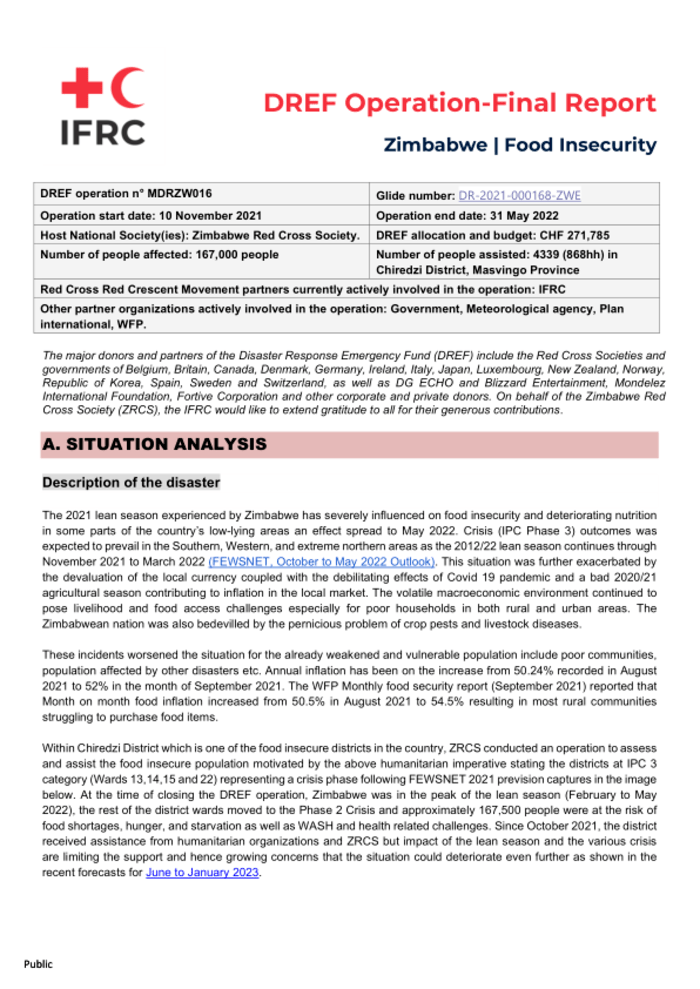
Glide number: DR-2021-000168-ZWE
A. SITUATION ANALYSIS
Description of the disaster
The 2021 lean season experienced by Zimbabwe has severely influenced on food insecurity and deteriorating nutrition in some parts of the country’s low-lying areas an effect spread to May 2022. Crisis (IPC Phase 3) outcomes was expected to prevail in the Southern, Western, and extreme northern areas as the 2012/22 lean season continues through November 2021 to March 2022 (FEWSNET, October to May 2022 Outlook). This situation was further exacerbated by the devaluation of the local currency coupled with the debilitating effects of Covid 19 pandemic and a bad 2020/21 agricultural season contributing to inflation in the local market. The volatile macroeconomic environment continued to pose livelihood and food access challenges especially for poor households in both rural and urban areas. The Zimbabwean nation was also bedevilled by the pernicious problem of crop pests and livestock diseases.
These incidents worsened the situation for the already weakened and vulnerable population include poor communities, population affected by other disasters etc. Annual inflation has been on the increase from 50.24% recorded in August 2021 to 52% in the month of September 2021. The WFP Monthly food security report (September 2021) reported that Month on month food inflation increased from 50.5% in August 2021 to 54.5% resulting in most rural communities struggling to purchase food items.
Within Chiredzi District which is one of the food insecure districts in the country, ZRCS conducted an operation to assess and assist the food insecure population motivated by the above humanitarian imperative stating the districts at IPC 3 category (Wards 13,14,15 and 22) representing a crisis phase following FEWSNET 2021 prevision captures in the image below. At the time of closing the DREF operation, Zimbabwe was in the peak of the lean season (February to May 2022), the rest of the district wards moved to the Phase 2 Crisis and approximately 167,500 people were at the risk of food shortages, hunger, and starvation as well as WASH and health related challenges. Since October 2021, the district received assistance from humanitarian organizations and ZRCS but impact of the lean season and the various crisis are limiting the support and hence growing concerns that the situation could deteriorate even further as shown in the recent forecasts for June to January 2023.
Post published in: Featured

